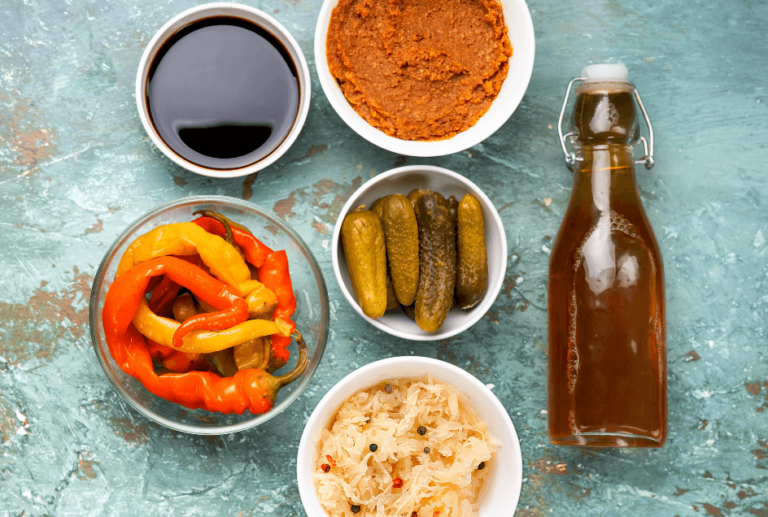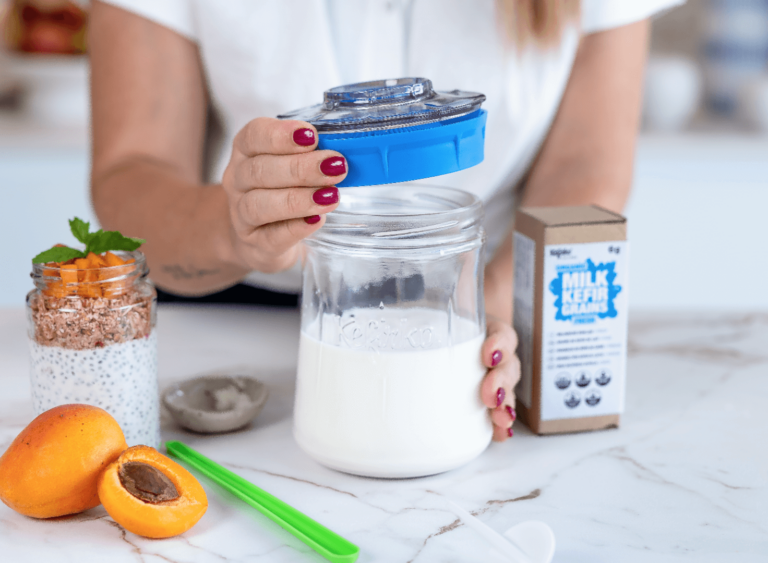Spring is here and so are fresh veggies!

Spring is a season of renewal, bringing an abundance of fresh, vibrant vegetables. Get ready to celebrate the season by fermenting some delicious vegetables! Not only will you save money and enjoy them longer, but fermentation also boosts their health benefits and makes them taste even better!
In this post, we’ll explore the basics of vegetable fermentation and share some delightful recipes to get you started.
Why Ferment Vegetables?
- More vitamins and minerals: Fermentation makes these nutrients easier for your body to absorb.
- Happy gut: Fermented veggies are packed with good bacteria that keep your digestive system running smoothly.
- Flavor explosion!: Fermentation adds a delicious tangy flavor that takes your veggies to the next level.
Some fresh spring vegetables that are perfect for fermentation are asparagus, radishes, carrots, beets, and green onions – and anything else you find growing this season! Besides that, you will only need water and salt.

Let's get fermenting!
- Prep the veggies: Wash and chop your vegetables into desired sizes. Smaller pieces will ferment faster than larger chunks.
- Make a brine: Dissolve 1-3 tablespoons of salt in a quart of water. The salt concentration can vary depending on your taste preference and the type of vegetable.
- Fill the jar: Place your vegetables into the jars, leaving about an inch of headspace. Pour the brine over the vegetables, ensuring they are completely submerged.
- Keep them down: Use weights to hold the veggies under the brine.
- Let it ferment: Seal the jars and find a cool, dark spot for them to ferment. This can take a few days to several weeks, depending on the temperature and veggie.
- Taste and Store: After a few days, take a peek! Once you reach your desired level of tang, store the jars in the fridge to slow down fermentation. You can use the fermentation jars or transfer them into the storage jars.
Easy, right? Now, here are some of our favourite ferments this season:
Fermented Asparagus Spears

Ingredients:
- Fresh asparagus,
- 2 cloves garlic,
- 1 teaspoon black peppercorns,
- 1 bay leaf,
- 2 tablespoons salt,
- 4 cups water.
Instructions:
- Trim the woody ends off the asparagus and pack them into a jar.
- Add garlic, peppercorns, and bay leaf.
- Pour the salt brine over the asparagus.
- Close the lid and ferment for about 14 days.
- When the taste suits you, they are ready to eat.
- Keep them in the refrigerator.
Don’t miss out on the new content about fermenting!
Subscribe to Kefirko newsletter
Spicy Fermented Radishes

Ingredients:
- Fresh radishes,
- 1 jalapeño pepper (sliced),
- 2 cloves garlic,
- 2 tablespoons salt,
- 4 cups water
Instructions:
- Slice radishes and jalapeño.
- Place radishes, jalapeño slices, and garlic into a jar.
- Pour the salt brine over the mixture.
- Add a weight on top, to keep radishes submerged.
- Cover with a lid and ferment for 5 days.
- When the taste suits you, store them in the fridge.
Tips for Successful Fermentation

Want to ensure your spring veggies ferment perfectly?
Here are some tips:
- Cleanliness: Ensure all utensils and jars are clean to prevent unwanted bacteria.
Temperature: Ideal fermentation temperature is between 21-24°C (70-75°F). - Patience: Don’t rush it! The longer the fermentation, the more complex the flavors.
- Keep vegetables submerged: Vegetables must remain under the brine to keep them safe from mold and allow for even fermentation.
- Trust the smell and taste: Check the smell and taste of your veggies during the fermentation. If something smells off, it probably is. Better safe than sorry!
With these recipe ideas and tips in your pocket, you’re well on your way to becoming a fermenting master!





